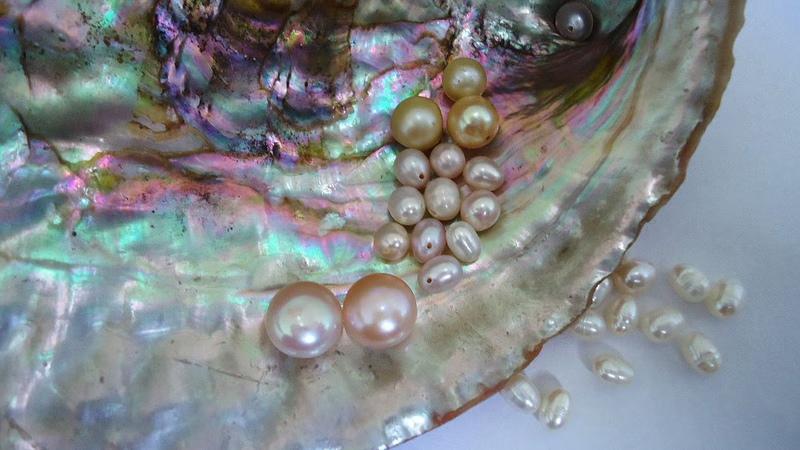
Natural and cultured pearls showcase unique characteristics and beauty.
Natural pearls are formed naturally inside mollusks, such as oysters or mussels, without any human intervention. They occur when an irritant, like a grain of sand or a parasite, enters the mollusk's shell, leading to the secretion of nacre (mother-of-pearl) layers around the irritant over time. Natural pearls are rare and highly valued due to their organic formation and unique characteristics. Cultured pearls are created through a process called pearl culturing, which involves human intervention. In pearl farming, a technician carefully implants a nucleus, often a small round bead, into the mollusk's mantle tissue. The mollusk then reacts to this irritant by secreting nacre layers around it, resulting in the formation of a pearl. Cultured pearls closely resemble natural pearls in appearance and are available in various shapes, sizes, and colors. They are more affordable and readily available compared to natural pearls.
It is very difficult to distinguish natural pearls from cultured pearls due to their similarity in appearance, and their specific weight is used for this purpose. The specific weight of natural pearls is usually less than 2.73, while the specific weight of most cultured pearls is higher than the above figure (of course, not all of them). Natural original pearls have a special glow and by turning the pearl string in the light, original pearls have ambient reflection, but sometimes low-quality pearls do not have the shine they should, and in this case, other methods should be considered for detection. Cultured pearls show a luminescence phenomenon under ultraviolet light, which is usually yellow in color and has a green glow in X-ray light.
Regarding artificial pearls, it can be said that this model of pearls is made from hollow crystal grains. in such a way that they paint their insides with a substance made from the transparent and shiny scales of some fish. Then the inside of these spheres is filled with wax and with this method artificial pearl seeds are created. These pearls look so natural and beautiful that sometimes it is very difficult to distinguish them from the original pearls. It is interesting to know that today, China, by entering the pearl market and producing a large volume of artificial pearls, has caused serious damage to the natural pearl fishing industry in the Persian Gulf.
Artificial pearls, also known as imitation or faux pearls, are not produced by living organisms. They are man-made and typically made of glass, plastic, or other materials. Artificial pearls are manufactured by coating a nucleus or a bead with a material that mimics the appearance of natural pearls. They lack the depth, luster, and organic structure of natural or cultured pearls. Cultured or cultured pearls are created in an interesting way. The pearl cultivator places a small amount of sand between the shell and the soft shell of the fish. After 2 or 3 years, the cultured pearl can be extracted by breaking the shell. The only difference between cultured pearls and natural pearls is that these pearls do not have a perfect appearance. But the country of Japan has been able to create cultured pearls that are completely similar to natural pearls by placing sand particles right in the shell.
-
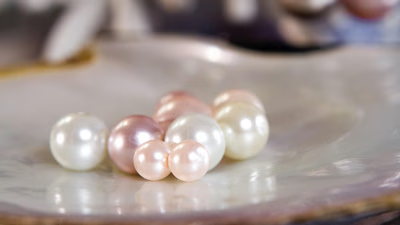
Natural pearl fishing in the Persian Gulf has a storied history, particularly around Bahrain, known for its rich oyster beds. Skilled divers employed traditional techniques to harvest oysters, facing dangers like drowning and shark attacks. This labor-intensive process involved extracting and grading pearls for local markets and international trade, significantly contributing to the region"s economy and cultural heritage. However, the rise of cultured pearls in the early 20th century, coupled with overfishing and environmental changes, led to a decline in natural pearl demand. Historically significant areas for pearl diving included "Mughas" or "Mughas al-Lulu
-
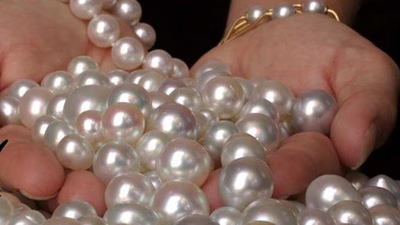
Pearls are categorized based on their cultivation methods, environments, and the mollusks that produce them. The two main types are natural and cultured pearls, with further distinctions between saltwater and freshwater varieties. Saltwater pearls, such as Akoya and South Sea pearls, are known for their high luster and larger sizes, while freshwater pearls are more abundant and come in various colors but typically have a lower shine. Akoya pearls, primarily from Japan and China, range from 2 to 10 millimeters in size and are often white or cream-colored. South Sea pearls, sourced from Australia and the Philippines, can be as large as 20 millimeters and exhibit luxurious luster in shades of white or gold. Mabe pearls have a unique shape due to their cultivation method involving a half-spherical nucleus. Conch pearls are rare gems known for their vibrant colors found in queen conch mollusks. Environmental factors like water quality and temperature significantly influence pearl characteristics, leading to variations in size, shape, and color among different types.
Tahitian pearls stand out for their dark hues cultivated in French Polynesia. Overall, the pearl industry is shaped by both natural processes and human intervention through farming techniques.
-
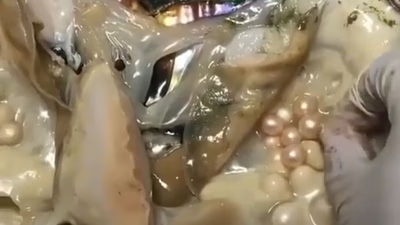
The Persian Gulf, particularly around Bahrain, has a rich history of producing some of the world"s finest natural pearls, known for their luster and unique colors. South Sea pearls from Australia, Indonesia, and the Philippines are also highly valued for their size and creamy hues. The Gulf of Mannar between India and Sri Lanka is recognized for its high-quality pearls with warm tones. Historically, the Persian Gulf"s pearl industry thrived until the early 1930s when oil discoveries shifted focus to more profitable ventures. This led to overfishing and pollution that devastated the pearl industry. Today, pearl oyster beds remain in the Persian Gulf, especially near Bahrain, where fishing has occurred for over two millennia. Despite other countries like Japan and Australia producing notable pearls, the Persian Gulf"s natural pearls are still considered among the best due to their unique environmental conditions. However, the legacy of traditional pearl diving has been largely overshadowed by industrial changes in the region. "
-

Natural pearls form organically within mollusks without human intervention, resulting from irritants like sand. They are rare and valued for their unique characteristics. Cultured pearls, on the other hand, are created through human intervention by implanting a nucleus into the mollusk, leading to nacre secretion. While they closely resemble natural pearls in appearance and are more affordable, distinguishing between the two can be challenging. Specific weight is one method of differentiation, with natural pearls typically weighing less than 2. 73. Cultured pearls exhibit luminescence under UV light, while artificial pearls are man-made from materials like glass or plastic and lack the organic qualities of natural or cultured varieties. The rise of artificial pearl production in China has significantly impacted the natural pearl industry in regions like the Persian Gulf. Understanding these differences is crucial for consumers and traders in the pearl market.
-
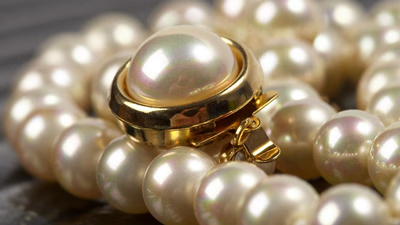
The price of pearls is influenced by several key factors including type, size, shape, luster, color, surface quality, and origin. Natural pearls and rare varieties like conch or Tahitian pearls are more valuable due to their scarcity. Larger pearls are generally more expensive, with significant price increases for larger sizes. Round pearls are the most sought after for their symmetry, while other shapes like baroque are less valuable. Luster plays a crucial role; pearls with high luster reflect light better and command higher prices. Freshwater pearls are typically less expensive than Akoya or Tahitian varieties. The South Sea pearl is the most expensive type, with prices ranging from $1,000 to over $100,000 based on size and quality. The origin of the pearl also affects its value; those from renowned regions like the Persian Gulf or South Sea are often priced higher due to their reputation.
Market demand and trends can further influence prices as consumer preferences shift. Overall, the value of a pearl is determined by a combination of these factors.
-
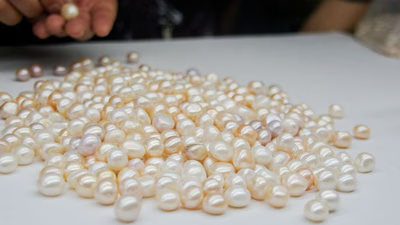
Natural pearls are gemstones formed within mollusks, such as oysters and mussels, when an irritant becomes trapped in their soft tissue. The mollusk secretes layers of nacre around the irritant, resulting in a pearl over several years. Factors like the species of mollusk and environmental conditions influence the pearl"s shape, luster, and color. Historically valued for their beauty, pearls have been traded for thousands of years, particularly in regions like China. They can vary in color from white to blackish gray and come in various shapes, with round pearls being the most sought after. The size of pearls typically ranges from 7 to 9. 5 mm, with larger and smoother specimens commanding higher prices. While natural pearls are rare and highly valued in jewelry, most pearls on the market today are cultured, created through human intervention to initiate pearl formation.
Cultured pearls resemble natural ones but are more affordable and widely available. "






